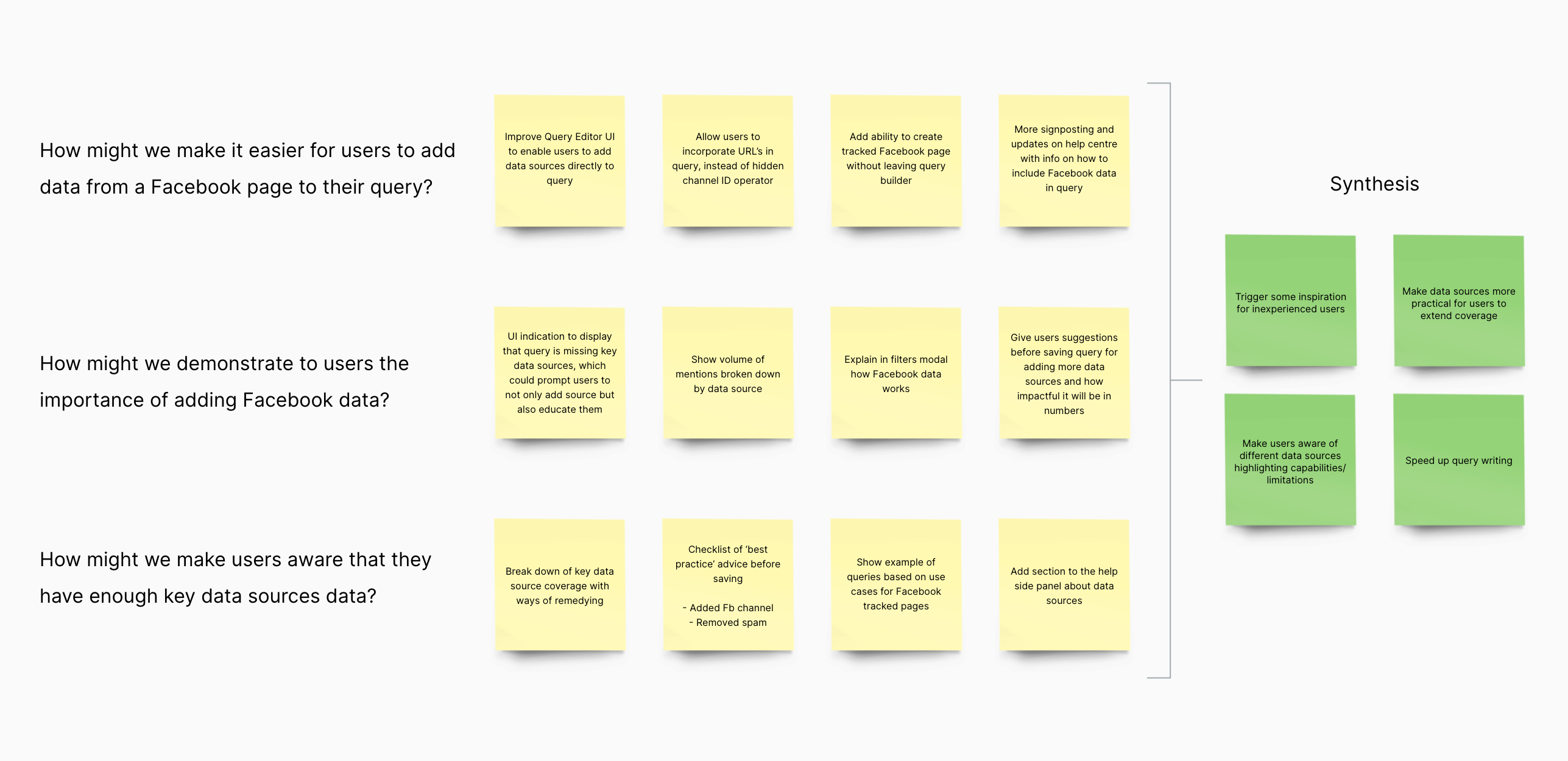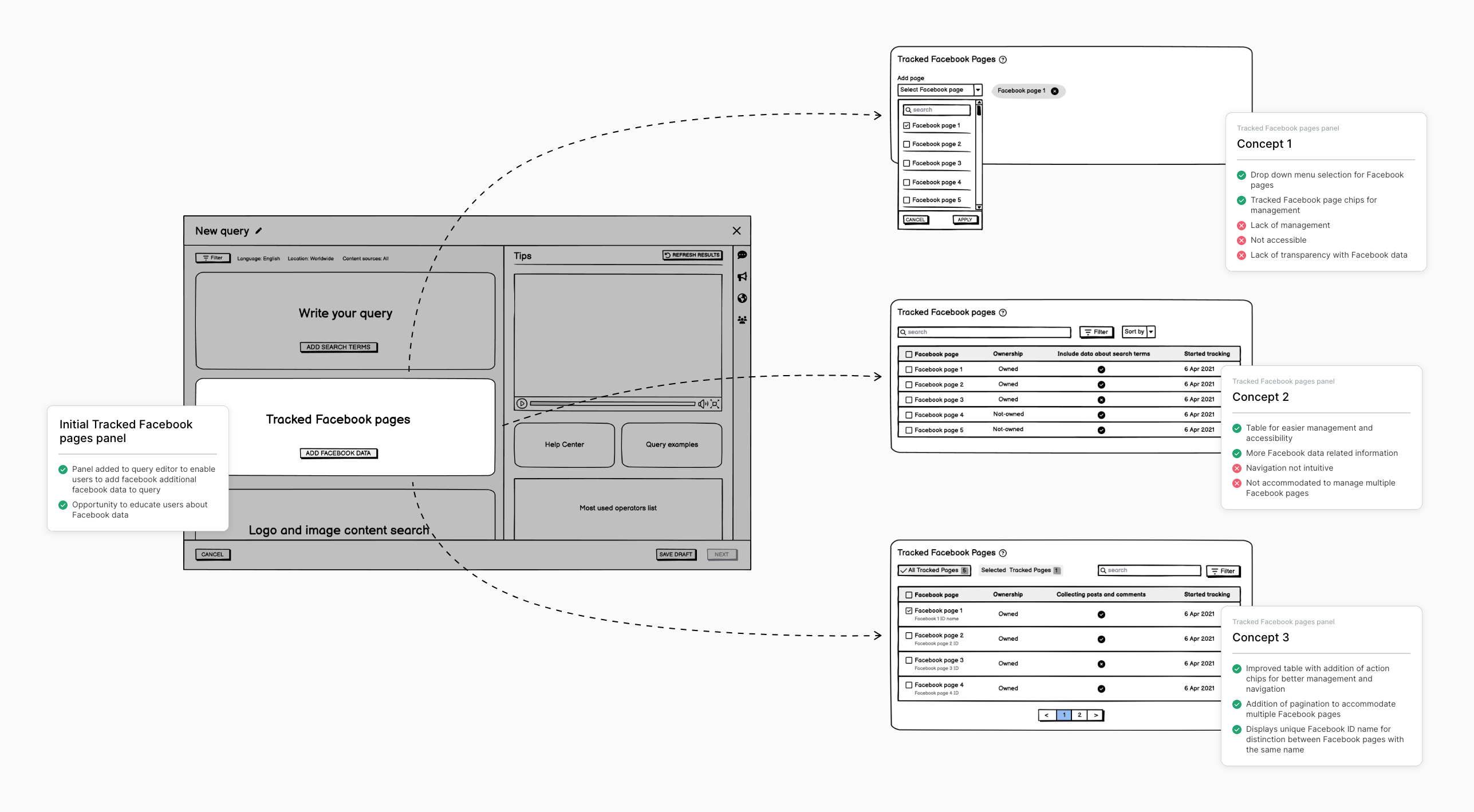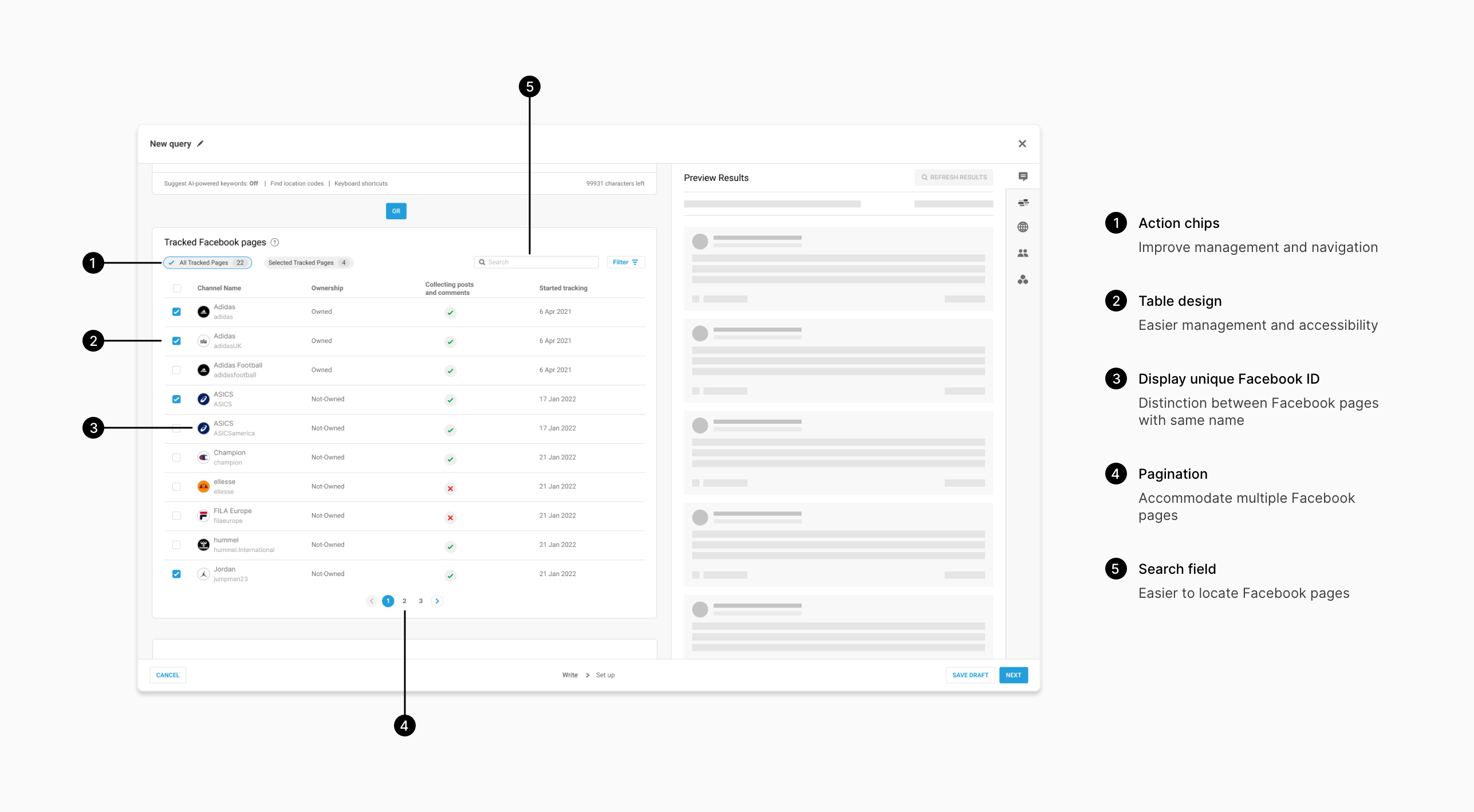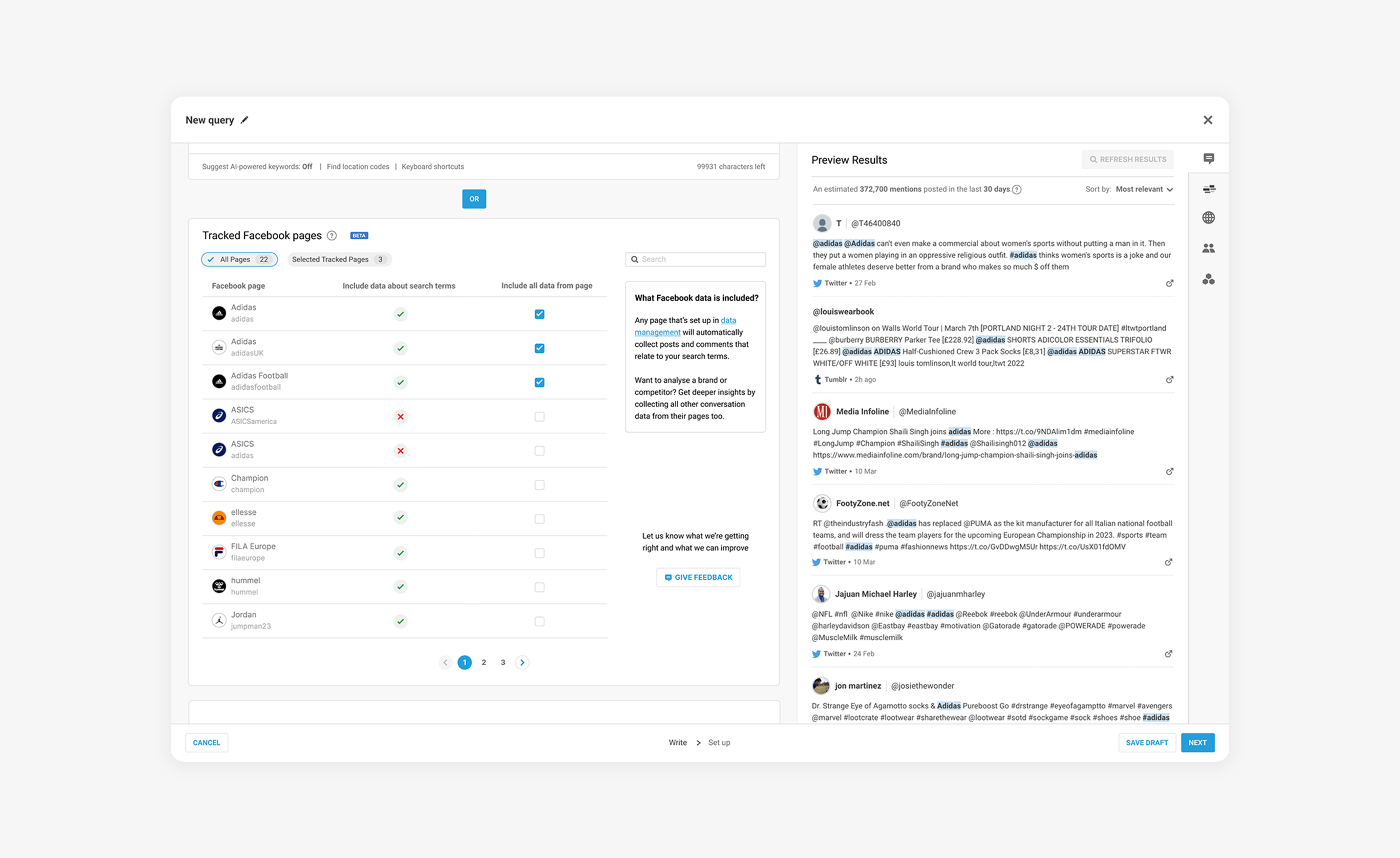Brandwatch
Tracked Facebook pages
Complex UX and insufficient user guidance resulted in limited data inclusion, notably from Facebook, in brand queries. Introducing the tracked Facebook pages feature enhances data collection from Facebook, helping to improve actionable insights.
Timeline
4 months
Role
Design Lead
Team
Product Manager
UX Researcher
Dev Team
Content Designer
Product Analyst
Tools
Balsamiq
Figma
Miro
Dovetail
Mixpanel

Problem
Query writing is the foundation of all work carried out in Brandwatch Consumer Research (BCR). If users are not constructing effective queries, they will struggle to get value from the tool. User brand queries lack coverage of diverse data sources, notably Facebook, Instagram and Reddit.
Evidence
In collaboration with UX research, an audit of 1000 queries and user interviews were conducted. This helped to gain insights into the current user experience and identify issues users encounter with data sources.
Don’t utilise the right operator to pull data from a Facebook page into a query
Top requests revolve around data, particularly easier access to Facebook and Instagram data
Most requested data sources is Facebook pages in queries
From the user interviews, users also demonstrated confusion in capturing data from multiple sources, to incorporate in a query due to complexity of query writing and lack of guidance . It was decided that the main focus would be on Facebook data due to the high demand/requests from users.
Opportunity
How might we increase the volume of Facebook data gathered for queries?
Hypothesis
Based on UX Research (evidence), if a Facebook feature was added to the Query Editor (the bet) for all users (customer segment), it will enable users to include all the data from selected Facebook pages in their query results (UX outcome).
Process
Utilised the triple diamond approach to promote collaboration, research and continuous improvements to achieve a user-centred solution as the solution is a new process for users.
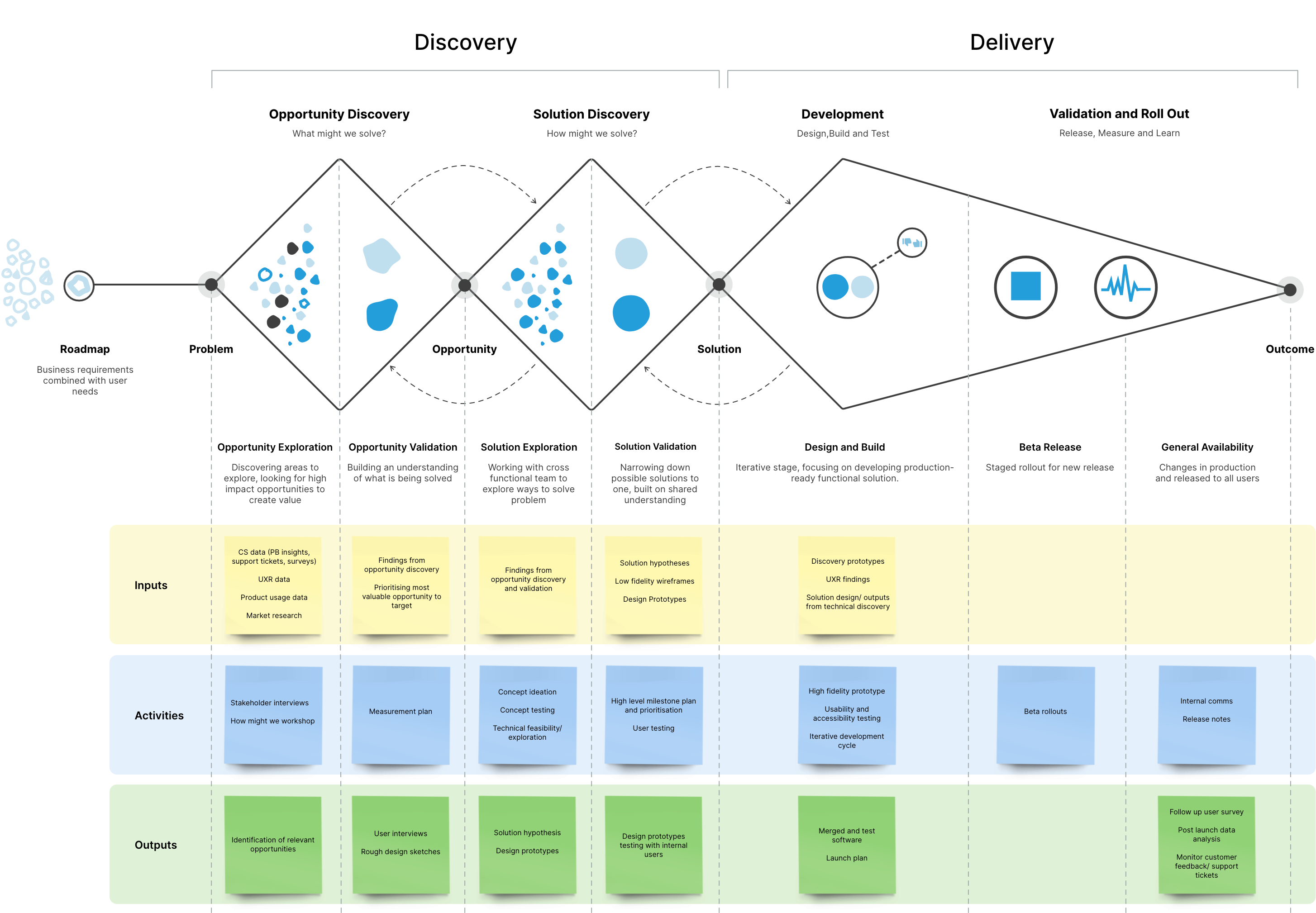
Opportunity discovery
Working alongside UX research, workshops were conducted which resulted in research artefacts to help define the scope of the project, as well as get a better understanding of user goals. It was decided that the main focus would be on Facebook data due to the high demand/requests from users.
Solution exploration
From the opportunity discovery phase the project scope and MVP was defined initiating the ideation phase, from low-fidelity prototype sketches to high-fidelity prototype prototypes.
Solution Validation
From the high-fidelity prototype a working prototype was created for moderated usability testing. The usability tests helped to understand how potential usability issues might affect the user experience and prioritise improvements for better experience.
" I wasn’t aware you could collect more Facebook data in queries"
Key insights
-
Users found this feature useful, especially for brand queries and weren’t aware of channel ID operator to bring Facebook data into query
-
Users didn’t fully understand the benefits of Facebook tracked pages panel due to lack of sign-posting
-
Users needed better content copy to understand what Facebook data is included
-
The “Select all” option encouraged users to include unnecessary data in their queries, instead of crafting precise queries to extract relevant insights
Outcome
Utilising the insights from usability testing, the Facebook Tracked pages panel was iterated and added to production for beta roll out, before being released to all users.
Tracked Facebook pages adoption
To gauge success, the main metrics were primary progress, usability and health progress.
Are users using the feature?
Adequate conversion rate, meaning users are using Facebook Tracked panel.
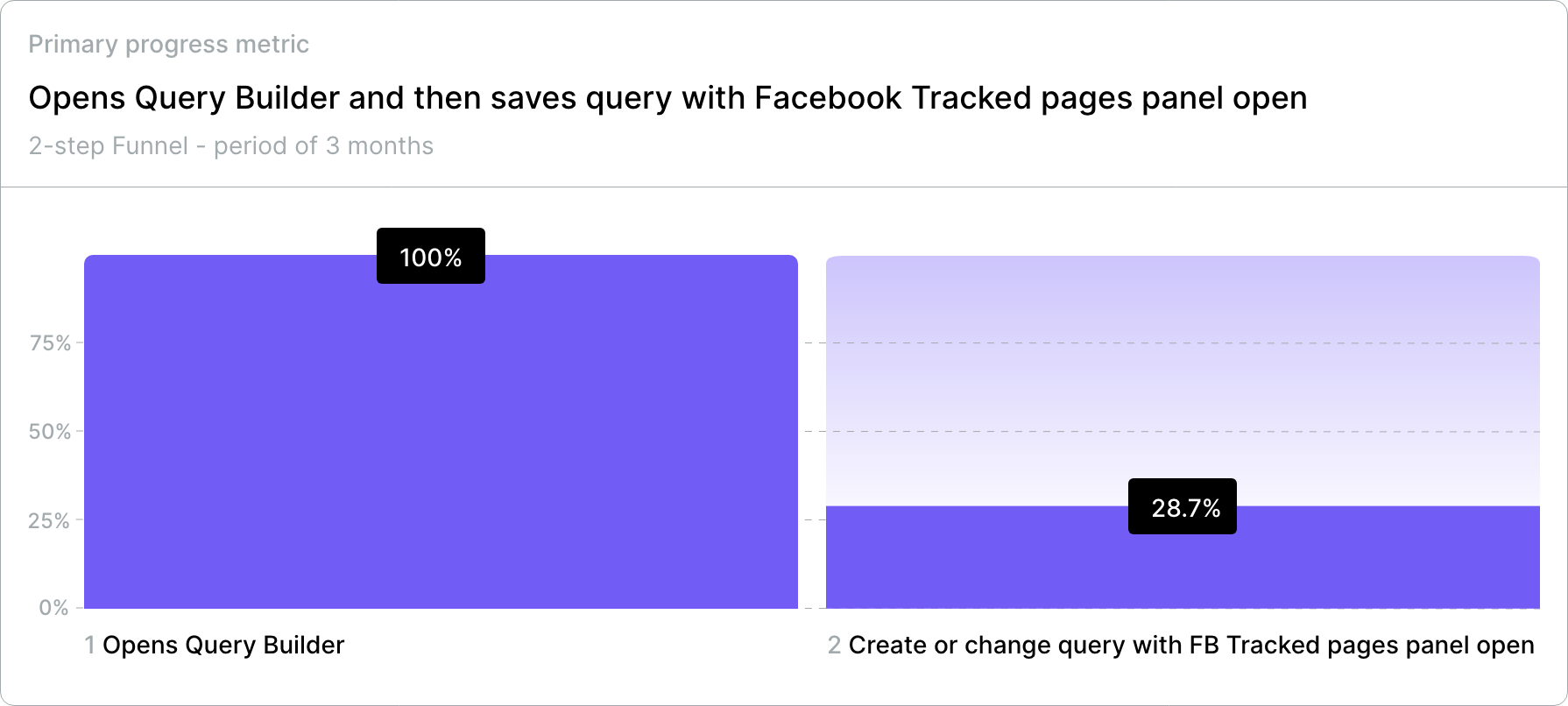
Do users find the new feature useful?
Lower than expected conversion rate, meaning users may not understand the feature or don’t find it useful for their need.
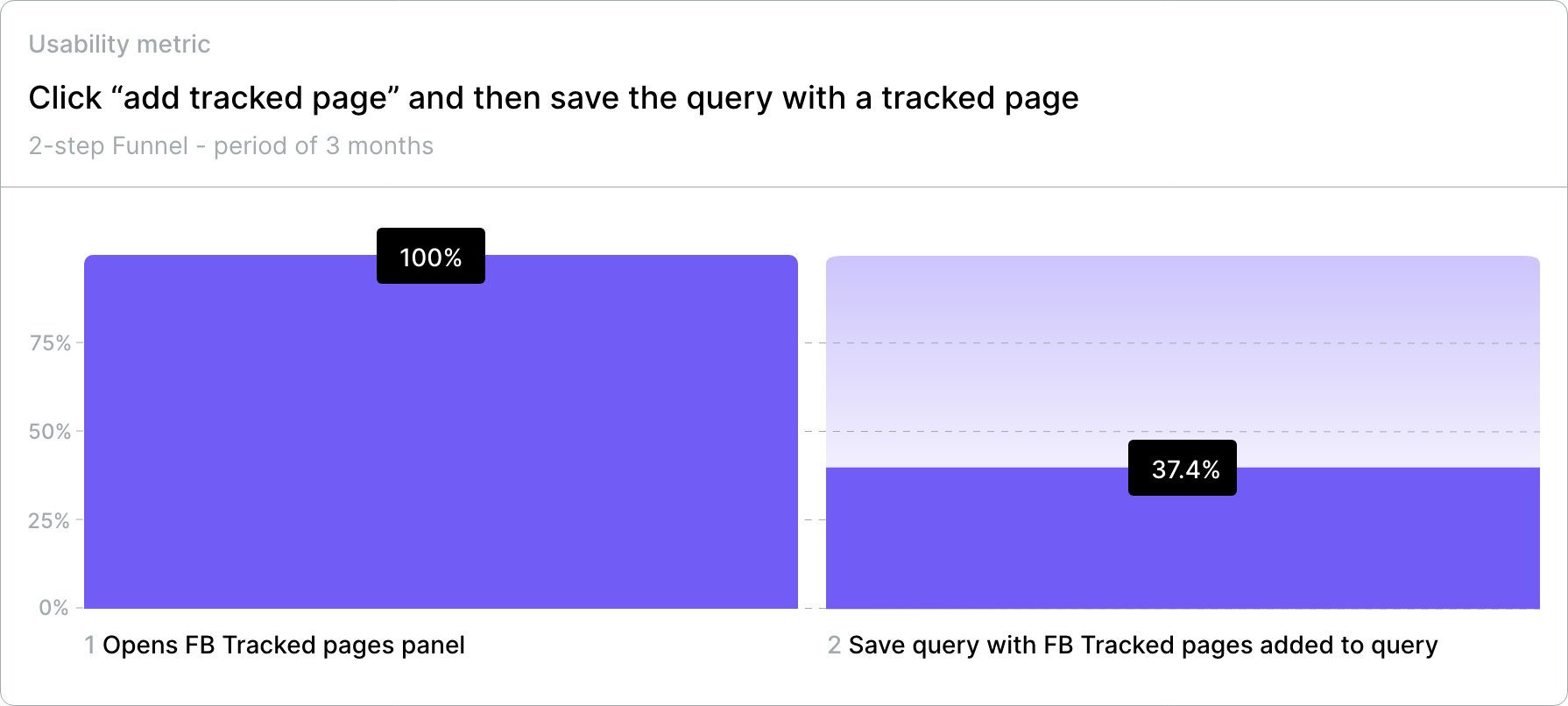
Does the feature stop new users from making their first Query when they first enter the Query Editor?
Minimal impact on using query editor, meaning the feature doesn’t affect users experience with using query editor.
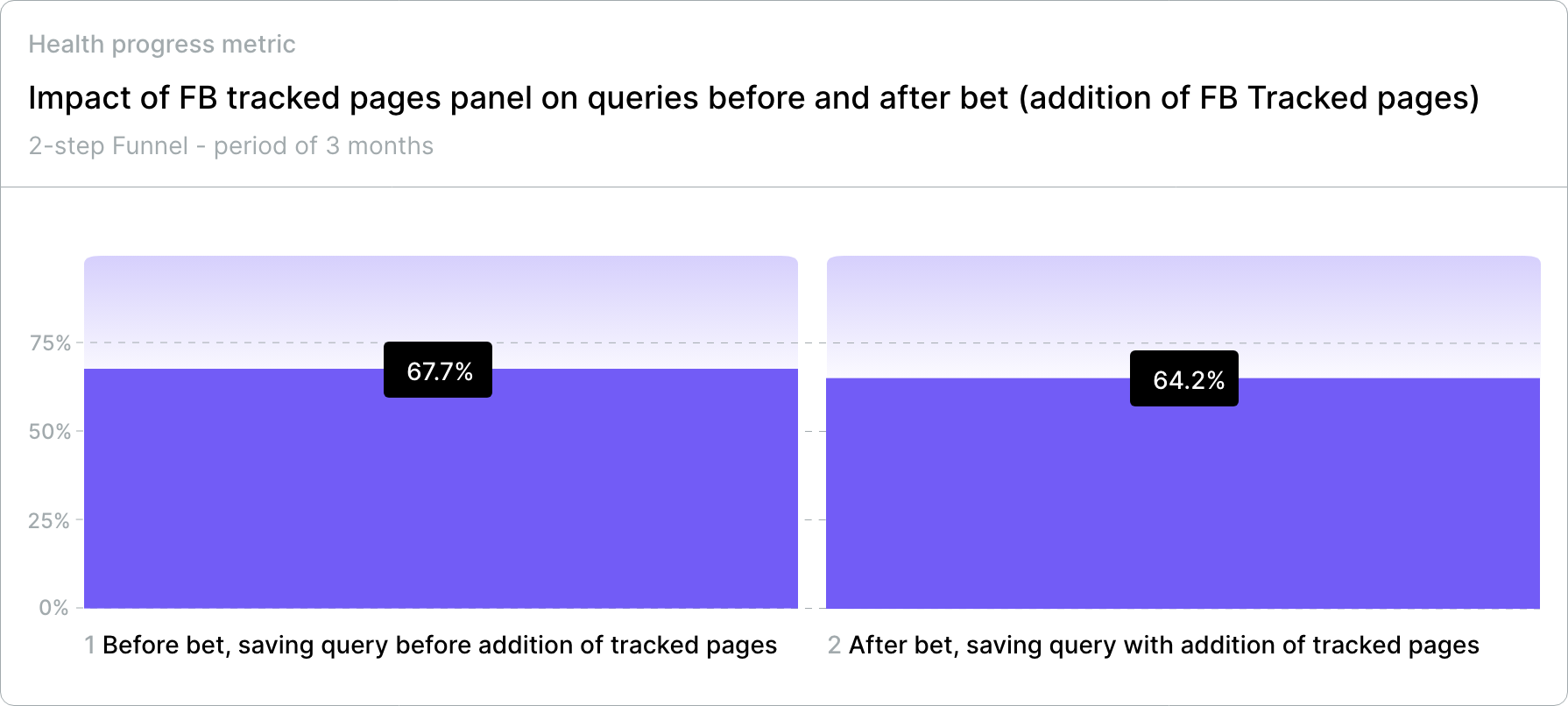
Reflections
Based on the metrics obtained over a period of 3 months and feedback from some users, potential future iterations were identified to enhance the users experience:
- Provide users with easier access to content source management to add Facebook pages to Query editor internally
- Introduce other highly sought after content sources such as instagram and Reddit
- Improve visibility of Facebook Tracked pages panel
